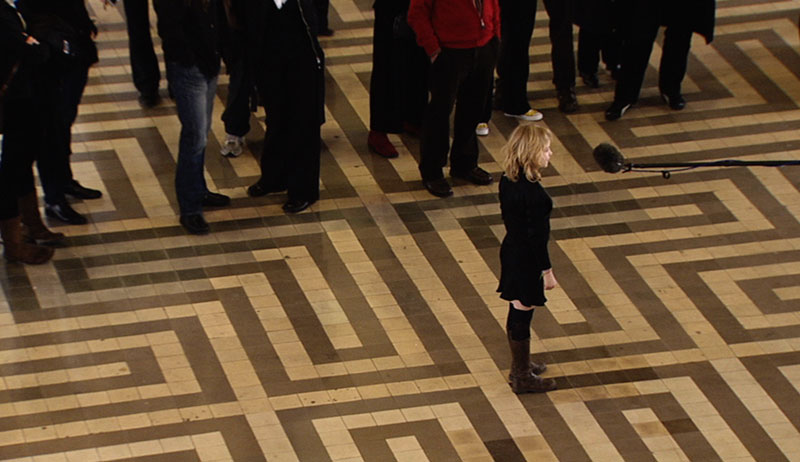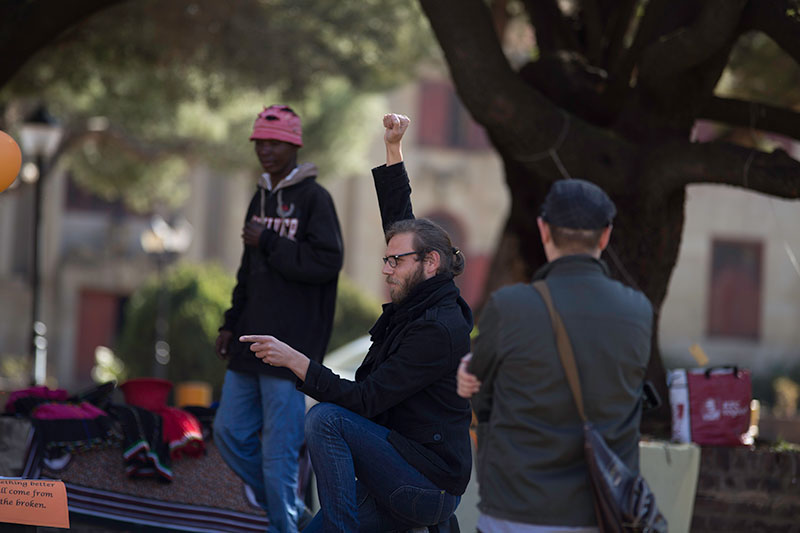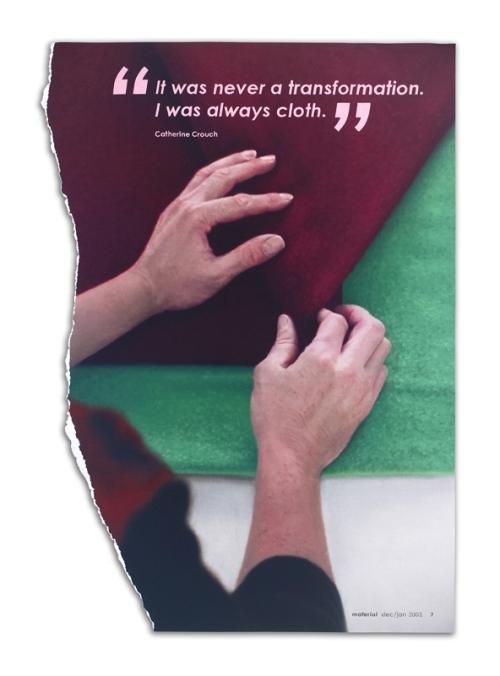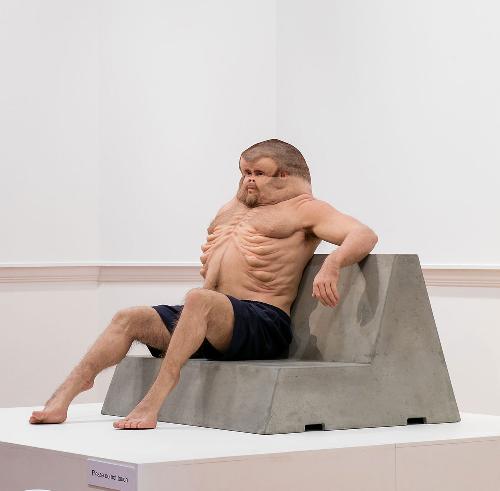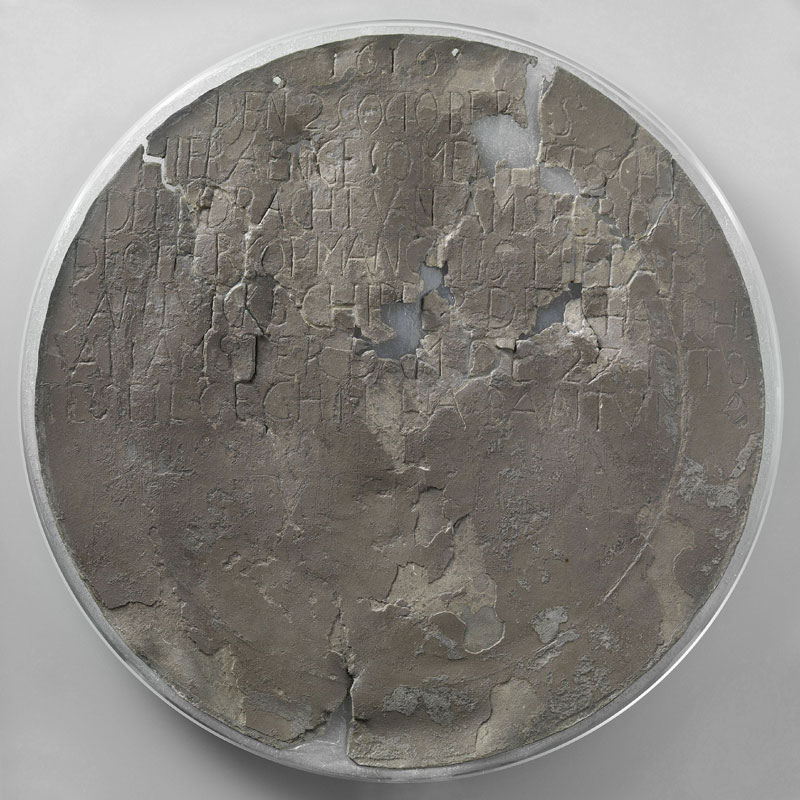
When Dutch trader Dirk Hartog was blown onto the West Australian coast, he left behind an inscribed dish nailed to a post. It is probably the first piece of European modernity to have been left on the continent, and is on show in Travellers and Traders in the Indian Ocean World at the Western Australian Maritime Museum. This is one of four exhibitions interested in capturing the Zeitgeist since Hartog’s landing 400 years ago. The appeal of the theme is invariably parochial, as locals pride themselves on the Dutch shipwrecks from the 1600s to the 1700s that litter the state’s waters, evidence of Australia’s contact with Europe before the arrival of the British on the Pacific coast.
But these four exhibitions are more ambitious than recounting Dutch discovery, as they pull this history into the orbit of the Indian Ocean rim. For the coasts of Africa, India and present-day Indonesia and Malaysia were once part of a Dutch trading empire. In Travellers we see glass beads made into spectacular Zulu necklaces and Arnhem Land chokers, and carved ships from Ancient Rome to nineteenth century India. Reaching historically and geographically along many coasts, Travellers covers much of the terrain covered by the Art Gallery of South Australia’s magnificent 2015 exhibition Treasure Ships, but it is no less impressive for this.
In Saltwater Mapping at the Lawrence Wilson Art Gallery the emphasis is on local Indigenous art, with a mix of video, painting and some magnificent prints from Nagula Jarndu Designs in Broome. Here the concepts of the ocean are as mystical as the sea monsters and spice jars that populate old Dutch maps featured in both exhibitions. Such maps also illustrate just how well Dutch navigators understood Australia’s coastline, and by comparison how ignorant the British were.
In the seventeenth century the Dutch had mapped the length of the Great Australian Bight all the way around to the western side of the Gulf of Carpentaria. Yet they were more interested in commodities than country, and the continent of New Holland was but a vast navigational problem to these keen merchants. A 1645 painting in Travellers shows a Dutch vessel landing on what is presumably the Australian coast. Coastal Landscape with Sailors Coming Ashore and Drinking Water (1645) shows an intensely brown coastline. Even the sky changes from blue to ruddy brown as it shifts from its place above the sea to hang like a dust storm above the brown country.
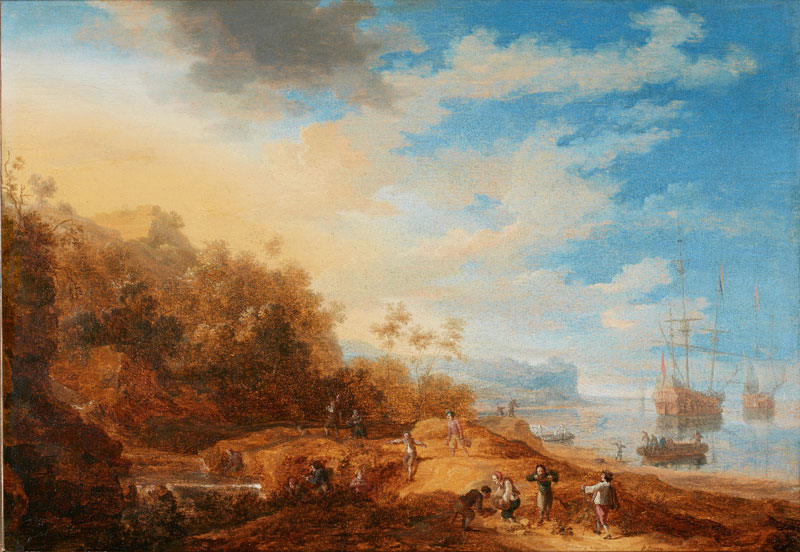
It is estimated that around 200 sailors were shipwrecked or abandoned on the west coast in the seventeenth and early eighteenth century. From these wrecks and misfortunes come stories of cannibalism, a heroic journey back to the Dutch colony that is now Jakarta, and stories of Dutch descendants among the First Australians. An exhibition in Geraldton, Descendants of the VOC, combines photo portraits of those thought to be Dutch descendants from Africa, Australia and Indonesia, with blue eyes and blonde hair amidst otherwise local ethnicities.
The search for identity through DNA tests and genealogy is a current agenda that is as troubling as it is compelling. When researchers arrived on an island off East Timor, they found Dutch descendants holding up a book by a Nazi eugenicist that featured photographs of their grandparents, proudly proclaiming their “Mestizo” heritage. So it is that the interest in origins is something of a double-bind, one in which racialism and racism can easily slip into each other.
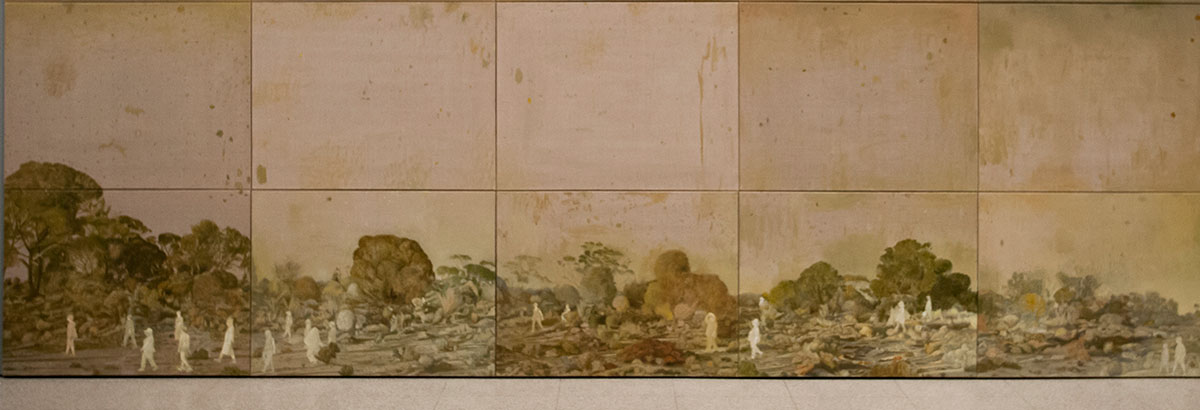
Such twists of history and identity are also the subject of Invisible Genres on exhibition at the John Curtin Gallery. This is a more speculative project on artists from old Dutch ports and points of navigation that draws largely on living artists, rather than old maps and genealogies. A video installation by South African artist Candice Breitz tells the story of the lives of a pair of queer Canadian twins, documenting the ways in which countries and their histories are hybrid and mixed up. Filmed in the same clothes and sitting in the same place, their tales make for a wonderful and confusing piece, almost as confusing as it must be to grow up as two queer, identical twins.
This is typical of the curatorial gamble that John Mateer takes up with this exhibition, with works that are barely related to Dutch legacies and yet which are international in their sensibilities. Balinese painter Dewa Puta Mokoh’s wayang-style pictures of people relaxing and making love, sleeping and sharing, have all the succinct effects of a Matisse or Modigliani. Mokoh’s humble and intimate subjects are typical of the exhibition as a whole, its artists living at the crossroads of internationalism.
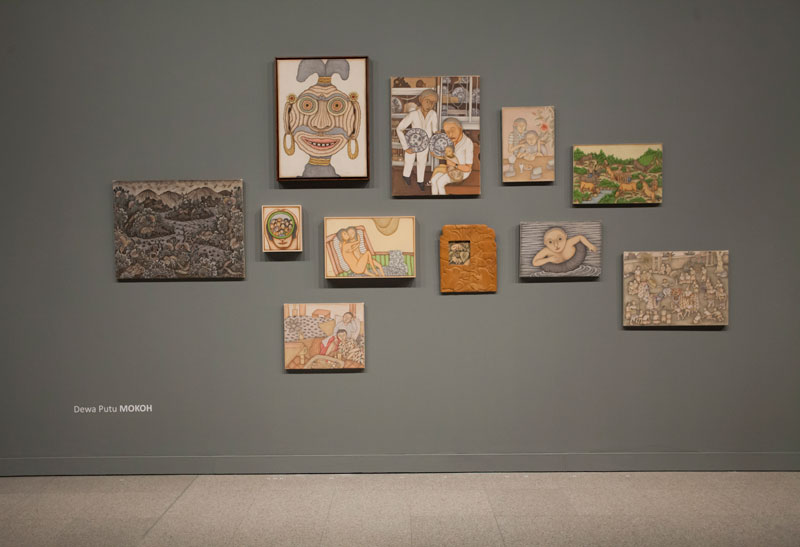
The West Australian names in Invisible Genres are mature, successful artists working at intersections of one kind or another. Abdul-Rahman Abdullah’s carving of a sleeping cat appears magically alive; although made of wood, its fur appears as soft as the fibre of the yellow lamp that hangs above it. Like Mokoh, Abdullah is able to invoke a spirit, an extra dimension, out of an ordinary domestic scene. So, too, in Julie Dowling’s Murlabaya—Becoming Dead (Is Condemned to Die) (2015), a prisoner stands amidst a great halo of golden hands.
Here a man stands innocent of wrongdoing, yet is caught in this web of fingers that recall Chinese Buddhist icons of a thousand years ago. The prisoner sits alongside Tony Nathan’s photographic series of Indonesian sulphur miners posing in rubber boots. Nathan and Dowling are iconophiles of the 21st century, transforming ordinary people into sacred art, through the magical mediums of painting and photography that pull them out of the ordinary.
The most historically interesting work in Invisible Genres is a carved head by Big John Dodo dating back to 1968. It was collected by the German anthropologist Helmut Petri, and likely marks the beginning of the practice of head carving in La Grange and along the northern coast. Dodo’s head is not entirely in the classical Indigenous world, yet it is far from just being a settler souvenir. Its magic lies in this transcultural identity, its drifting out of place and into an experimental internationalism.
Saltwater Mapping includes three other masters of the north-west. A massive ochre painting by Jarinyanu David Downs appears to be of Kurtal, the rain dance spirit that uses pearl shell pendants to bring the rain storm miltijaru from the coast. There are also pearl shells etched and coloured by Butcher Joe Nangan, featuring women wearing butterfly wings, mermaids swimming around each other and men wrestling giant snakes. Joe was an incredible natural illustrator, and here he tips into the natural fantastic, invoking a mystical coastal world that is indebted to mythologies of all kinds. There are also string crosses by Roy Wiggan that are shaped into a stingray, waterfalls and a falling star made out of glorious rainbows of coloured thread.
.jpg)
Many of the historical works in Invisible Genres, Saltwater Mapping and Travellers and Traders draw from the collections of the Berndt Museum and the Kerry Stokes Collection. Their stories helps us think about the ways in which local artists are still working with themes that precede the British settlement of the state, and position them more internationally than in some faded relation to the Eastern States. The new generation of artists, working more internationally, are conscious of the way that Western Australia has long been a part of greater economies. So it is that this exhibition features icons of intersectionality, figures that cross not only geographies and histories but dimensions of the imagination.
These are the heroes of the 21st century, who are neither here nor there but both at once, and who allude to a fourth dimension by mixing up more than one or two histories and heritages. The Indigenous works in particular remind us that in the rush to be contemporary, to curate and think across geographies and times, contemporary practice is less an innovation than it is an archaism. For in their use of shell and string, wood and ochre, Dodo, Downs, Joe and Wiggan were contemporary before the contemporary became the Zeitgeist, and global citizens before globalisation. It was only in modernity’s rush to the future that the contemporary was forgotten, the everyday innovations of artists around the world relegated to anthropology museums, craft markets and souvenir stands.
A second component of Saltwater Mapping and Invisible Genres are maps and landscapes respectively, object lessons on the emergence of Australia from the European image of the southern sea. On the mottled edges of a huge landscape painting by Gregory Pryor in Invisible Genres there is an uneven arrangement of trees, shrubs and walkers. They are indifferent to the greater surface that is empty of figures, their destinies playing themselves out as if ignorant of its vastness. This is the kind of encounter that we imagine the Dutch to have had on the coastline: their crowded, urban lives confronting the vastness of the sea and then the Australian continent.
Pryor’s looming, soft surfaces echo a video piece by Wendelien van Oldenborgh in which Dutch people read an anti-colonial tract in a cavernous building. The work, Mateer thinks, makes us feels like we are within a Dutch church, consisting as it does as much of space as it does the reader’s voice. It is only possible to speculate on the feelings of the Dutch as they encountered the Australian coastline, yet here in this arrangement of landscapes and interiors the exhibition creates a certain aesthetic resonance between Australia and the Netherlands.
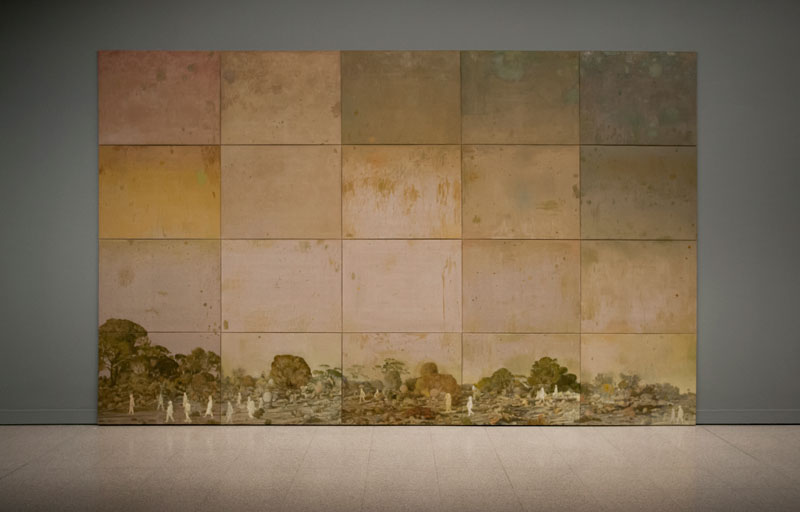
In this, Invisible Genres is as much iconoclastic, as it is iconophilic, at least as iconocolastic as contemporary art can attempt to be. In the documentation of a PVI piece in South Africa, transformer (2016), the performance company ask participants to arrange partners into living statues, amidst a local dispute over the legacy of colonialism in the country. “We do not need colonial symbols of the past,” say PVI, “we need symbols of the future.” Perhaps the paradox of proposing the significance of Dutch history over the British one lies in this problem of substituting one symbol for another, one colonial story for another, as it fleshes out the circumstantial and incidental nature of history.
In Australia the few attempts that have been made to change the symbolic order of history have largely failed. Take, for example, ANZAC Day in 1992, when then Prime Minister Paul Keating spoke to the death of Australian troops in Asia in World War Two, rather than returning to the tired shores of Gallipoli. A year later, the Asia Pacific Triennial became the flagship exhibition that foregrounded Australia’s ties not to Europe but to Asia. Yet such attempts at changing the symbolic order of Australia have been overwhelmed by a turn back to the conflicts of First Australians and settlers, to the so-called History Wars between invasion and settlement. It has left the country, and its artworld, bound to an often-nasty dialectic of black and white, at the price of the complexity and multiplicity presented in these exhibitions.
So it is that this commemoration of Dutch traders in Australia, of Dutch ancestry among local Indigenous people, and of West Australia’s ties to the Indian Ocean, opens up a faint but compelling twist on the weary battlegrounds of the Australian imagination. Today, there are more opportunities for internationalism than ever before, yet Australia largely remains bound to a parochial version of its history and identity. Boarding cheap flights from Perth to cities in Asia, it is impossible to ignore the absence of settler-European faces, with the exception of flights to the holiday hell of Denpasar.
These exhibitions present a desperate reaching out beyond the West Australian shore, to cities and histories that are little known. Recently, a survey of Perth arts practitioners lent support to an arts festival like the Asia-Pacific Triennial with a focus on Aboriginal Art, the Indian Ocean Region and Experimental Art. What the artists in these exhibitions show is that these are not distinct ideas, but are part of a history of long duration.
